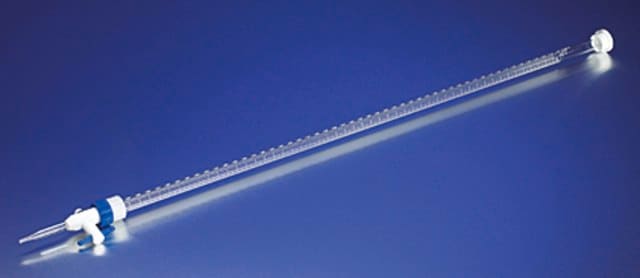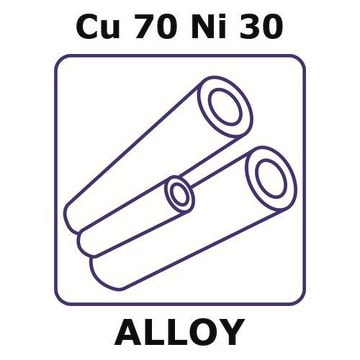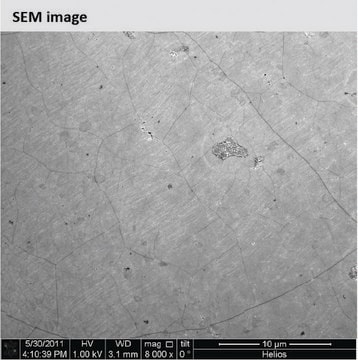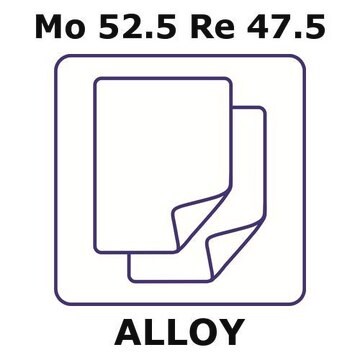推荐产品
化驗
99.95%
形狀
foil
製造商/商標名
Goodfellow 516-303-75
電阻係數
4.9 μΩ-cm, 20°C
尺寸 × 厚度
50x50 mm × 0.125 mm
bp
5660 °C (lit.)
mp
3410 °C (lit.)
密度
19.3 g/mL at 25 °C (lit.)
SMILES 字串
[W]
InChI
1S/W
InChI 密鑰
WFKWXMTUELFFGS-UHFFFAOYSA-N
一般說明
For updated SDS information please visit www.goodfellow.com.
法律資訊
Product of Goodfellow
J R Marbach et al.
Physics in medicine and biology, 26(3), 435-443 (1981-05-01)
Curves relating beam energy, scattering foil thickness, central-axis depth-dose, and beam flatness have been generated using data taken on a Siemens 200A betatron. The curve set allows a single combination of tungsten foil thickness and electron beam energy to be
Congshang Wan et al.
Ultramicroscopy, 119, 106-110 (2011-11-15)
Thermionic electron emission from 200 to 500 nm thick coatings of scandium oxide on tungsten foil have been examined in thermionic emission microscopy, spectroscopic photoelectron microcopy, synchrotron radiation and ultraviolet photoelectron spectroscopy (UPS). A clear dependence of the scandium oxide-W
Mehran Ahmadlou et al.
Nature communications, 6, 6773-6773 (2015-04-04)
The superior colliculus is a layered structure important for body- and gaze-orienting responses. Its superficial layer is, next to the lateral geniculate nucleus, the second major target of retinal ganglion axons and is retinotopically organized. Here we show that in
Jan R Andreesen et al.
Annals of the New York Academy of Sciences, 1125, 215-229 (2007-12-22)
The history and changing function of tungsten as the heaviest element in biological systems is given. It starts from an inhibitory element/anion, especially for the iron molybdenum-cofactor (FeMoCo)-containing enzyme nitrogenase involved in dinitrogen fixation, as well as for the many
P Thongkumkoon et al.
Toxicology letters, 226(1), 90-97 (2014-02-08)
The toxicity of nanomaterials has been well known, but mechanisms involved have been little known. This study was aimed at looking at direct interaction between nanomaterials and naked DNA for some fundamental understanding. Two different types of nanomaterials, carbon nanotubes
我们的科学家团队拥有各种研究领域经验,包括生命科学、材料科学、化学合成、色谱、分析及许多其他领域.
联系技术服务部门







